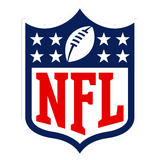
- Get a sense of where to value the rookie IDPs among the sea of offensive weapons: Can’t figure out where Abdul Carter or Jihaad Campbell match up with the likes of RJ Harvey or Luther Burden III? Dive in to find out!
- Seven rounds broken down by pick: Designed to provide a walkthrough of rookie drafts that include IDP to pinpoint the best values along the way.
- Final chance to claim 25% off PFF+: Use code DRAFT25 and unlock access to player grades, fantasy tools and the 2025 Draft Guide.
Estimated Reading Time: 8 minutes

With rookie drafts starting up in full force, fantasy managers are presented with plenty of different rankings to help them understand which players to value at each pick.
Those rankings are helpful, but it is rare to find a guide that details how to value offense and IDPs combined in rookie drafts — and this is exactly what this draft board aims to provide.
- Offensive scoring is based on standard PPR and starting roster requirements of 1 QB, 2 RBs, 3 WRs, 1 TE and 3 FLEX.
- IDP positions are “true position” settings and based on 2-EDGEs, 1-2-DTs, 2-3-LBs, 2-Safeties, and 2-CBs starting roster requirements.
- For more detailed insight into the IDP rankings check out the top-50 rookie IDP rankings article here.
The following IDP rankings are based on the scoring laid out below:
PFF-preferred IDP scoring:
| POSITION | SOLO TKLs | ASSISTS | SACKS | TFLs | QB HITS | PBUs |
| DL | 2.5 | 1.25 | 5 | 1 | 2 | 2 |
| LB | 1.5 | 0.75 | 4 | 1 | 2 | 2 |
| DB | 2 | 1 | 4 | 1 | 2 | 2 |
ROUND 1
1.01: Las Vegas Raiders running back Ashton Jeanty remains the top pick in dynasty rookie drafts as we’re getting a generational running back prospect who is going to dominate the touches out of that backfield. Jeanty eventually becoming the dynasty RB1 is well within his range of outcomes, so there’s nothing to overthink here with the first pick.
1.02: Travis Hunter going to the Jacksonville Jaguars is an ideal situation for his fantasy potential as he not only gets a stable and above average quarterback situation, and for leagues that allow offensive players to score defensive points, he’s going to get work as a cornerback as well and provide even more of a boost to his potential production. Burden is the top wide receiver in this class and should be treated as such with this landing spot, regardless of defensive scoring potential in fantasy formats. For IDP leagues on Sleeper, where Hunter carries dual-eligibility as both a WR and DB, there is a legitimate argument for him as the 1.01 in rookie drafts, considering we get wide receiver points in our DB slot, which is a massive cheat code.
1.03 – 1.04: Whether you prefer running back or wide receiver at this point, you’ll get two excellent options with great long-term landing spots. Omarion Hampton and Tetairoa McMillan are going to be stars in their respective offenses for years to come, putting both in play early in our rookie drafts.
1.05 – 1.07: Colston Loveland starts to come into play in this range, especially for teams in need of a tight end, and as the top-drafted tight end in this class, even in a relatively crowded receiving corps, Loveland should offer strong enough production to be in play as a top-12 fantasy tight end. For those not interested in the position, running back is the next most logical choice – either TreVeyon Henderson or Quinshon Judkins – whichever you prefer.
1.08 – 1.10: The first IDP option, Abdul Carter, is in play later in the first round of rookie drafts as the clear best defensive player in this class and a great bet for long-term IDP value. For those not willing to spend up on an IDP just yet, both RJ Harvey and Emeka Egbuka are very good consolation prizes on the offensive side of the ball to pivot to, depending on what your roster is looking for. Harvey for more short-term fantasy value at the running back position, or Egbuka for a longer-term play at wide receiver that could require some worthwhile patience.
1.11 – 1.12: Jayden Higgins is in a great position to be a consistent WR2 option in the Houston Texans offense with C.J. Stroud at quarterback. Higgins should fit as a big, reliable outside wide receiver who can win against single coverage, giving Stroud two high-end options on the outside alongside Nico Collins.
Tyler Warren has a clearer path to targets than Loveland, drafted ahead of him, so for those who want to flip these two, that would be understandable. The Indianapolis Colts quarterback situation isn’t ideal at the moment, considering Anthony Richardson’s struggles early in his career, so that is also factored into Warren coming in a bit behind Loveland for now.
ROUND 2
2.01 – 2.03: Cameron Ward is in play here to start the second round as he’s locked into a starting job likely for multiple years. While Ward doesn’t offer the encouraging profile of past top-five quarterbacks, he shouldn’t fall much further than this, considering the Tennessee Titans‘ investment in him.
Jihaad Campbell is the first linebacker to be considered in IDP rookie drafts after getting first-round capital from the Philadelphia Eagles, who are likely to utilize him in numerous ways, mainly as an edge, apparently. This could lead to more boom/bust weeks for IDP, but his opportunity to get on the field early and often in his career is arguably the best of any other linebacker in this class.
2.04 – 2.06: Matthew Golden officially has first-round draft capital to his name now, though his college production profile does not provide encouragement that he’s worthy of that investment, which creates a less-likely path to fantasy success or, at the very least, is going to take time to be a reliable fantasy starter. He scored a 58th percentile mark in the wide receiver prospect model post-draft, putting him in a range of players who have just a 17% top-12 success rate for fantasy and a 35% success rate for top 36.
Both Kaleb Johnson and Tre Harris are in much better positions to provide immediate fantasy production for our return on investment in rookie drafts. Johnson should be a starter in Pittsburgh’s backfield along with Jaylen Warren, while Harris gives Justin Herbert the clear top outside wide receiver that the Chargers offense lacked this past season, coming off a very productive college career.
2.07 – 2.08: Cameron Skattebo is the first Day 3 prospect to consider here, landing in an ideal backfield for touches with the New York Giants. Skattebo had one of the best college production profiles in this class and offers the upside of a workhorse running back should that translate to the next level.
Carson Schwesinger was the first pick of the second round, giving IDP managers a linebacker with ideal draft capital and a relatively positive landing spot with the Cleveland Browns. Defensive coordinator Jim Schwartz has typically run a one-full-time-linebacker system in Cleveland, which will likely be held down by a veteran like Jordan Hicks, though considering the injury concern with Jeremiah Owusu-Koramoah and the softer options behind him (Jerome Baker, Devin Bush), Schwesinger could be fast-tracked to a starting role at some point in Year 1, even if not in a full-time role.
2.09 – 3.02: As the top offensive weapons start to dry up a bit, the top IDP options become more intriguing to consider in this range, though there may be drafters who have more confidence in these offensive pieces still at this point, though all in this range aren’t likely set to be Year 1 fantasy options.
Both James Pearce Jr. and Mike Green are two of the best pure pass-rushers in this class, and while they each come with some off-field concerns, their opportunities to contribute on their new teams are about as good as it gets. Both have the potential to be the best pass-rushers on their respective teams sooner rather than later, offering high-end college profiles that should allow them to translate into being fantasy starters in most IDP formats.
For DT-required formats, Mason Graham is also the clear top target at the position, offering an ideal combination of pass-rush and run defense chops that will likely put him in a volume-heavy role for the Cleveland Browns. For those dynasty leagues that require at least one starting defensive tackle, Graham should not fall any further than this range.
ROUND 3

3.03 – 3.05: Jalon Walker was drafted by the Atlanta Falcons ahead of James Pearce Jr., though Walker’s expected usage and college profile aren’t as encouraging for IDP purposes as he’ll likely be utilized in more of a hybrid edge and off-ball linebacker role. This isn’t quite the same outlook as with Campbell because Walker does not excel at either role just yet, and with Kaden Elliss, who offers a similar skillset, Walker’s opportunities could be limited, adding even more to the potential inconsistent production. Walker could still emerge as a full-time starter like Campbell is expected to be in Philadelphia, especially with Elliss an expected free agent at the end of this season, though that does take at least one year of usefulness off the board for us, putting him slightly behind his teammate, Pearce.
3.06 – 3.11: The first safety to target for IDP is going to be Nick Emmanwori, who is built for IDP production, considering his size, athleticism and experience around the line of scrimmage. Emmanwori should absorb more of the prime IDP alignments as a starter in Mike MacDonald’s defense, potentially acting as the team’s LB2 in certain packages, making him the more ideal IDP target in rookie drafts.
Demetrius Knight Jr. could move up the rankings should Germaine Pratt’s request to be traded get fulfilled, giving Knight a potential full-time role next to Logan Wilson in Cincinnati. However, for now, this is a crowded linebacker room, as the team also added Clemson’s Barrett Carter on Day 3. As a Day 2 pick, Knight is still worth drafting in the third round of rookie drafts because he could still get that starting job eventually, even if not as a rookie.
Both Mykel Williams and Shemar Stewart got great draft capital and, on paper, have clearer paths to snaps with their respective landing spots, however, both players project to be more long-term developmental prospects coming out of college. Their likelihood to emerge as consistent IDP-relevant options is lower than typical first-round picks (view their profiles here), but that doesn’t mean they can’t succeed at some point – it’s just unlikely to be immediately.
3.12 – 4.01: The two most interesting tight ends for fantasy purposes are in consideration near the end of the third round. Terrance Ferguson gets second-round capital with the Los Angeles Rams, who can utilize his receiving upside in the passing game, likely more so than Elijah Arroyo and Mason Taylor who do not have fantasy-relevant receiving upside.
Harold Fannin Jr. is the most productive tight end coming out of college, and even with a landing spot in Cleveland where David Njoku is the clear TE1, Fannin has a chance to emerge beyond his rookie season with Njoku’s contract expiring at the end of this season.
Nickolas Martin was one of the biggest risers in the linebacker prospect model because he was projected to go outside the top-200 picks in the NFL draft but lands on a thin San Francisco 49ers depth chart in the third round of the draft, where his toughest competition will be Dee Winters in Year 1. Considering the investment, it wouldn’t be overly surprising to see Martin take on a larger role as a rookie next to Fred Warner.
Click here for more draft tools:
NFL Draft Big Board | Mock Draft Simulator | NCAA Premium Stats
2025 PFF Draft Guide | Mock Draft Hub | Prospect Data Profiles
Draft Position Rankings
ROUND 4

4.02 – 5.01: As the more desirable defensive options begin to dry up now, we can focus back again to the offensive side to throw a few more higher upside darts at premium positions, even if their potential success rates aren’t high, they become more valuable if they do hit, than taking middling IDPs.
Not to say that all IDPs in this range are going to be duds either, as Nic Scourton, Derrick Harmon and Princely Umanmielen all offer solid college profiles with the potential to become weekly fantasy starters for us in the next few seasons. The concern with focusing too much on the IDPs here is that there are a lot more players at these defensive positions who can all return similar value. This ranking just separates those with the more favorable edges in that race, even if the margins are thin.
A player like Tory Horton stands out as a more desirable sleeper to bet on, landing on the Seattle Seahawks, who could stand to utilize his height and athleticism on the outside in their passing game. Horton has an ideal production profile coming out of college as well and fits the type of Day 3 archetype for those who can overcome their draft capital.
As alluded to earlier, the other Day 2 tight ends, Elijah Arroyo and Mason Taylor, don’t offer very encouraging receiving profiles coming out of college, comparable to past non-fantasy contributors like Jelani Woods, Josh Oliver, Devin Asiasi, Tommy Tremble, and Dalton Keene – all past Day 2 tight ends as well. We shouldn’t rule them out completely, considering the draft capital, but they’re certainly less desirable, even at this point in rookie drafts.
ROUND 5

5.02 – 5.12: The late-round dart throws continue here, anchored more by the IDPs as the offense dominated more of the fourth round. There are still some offensive players to consider, including Elic Ayomanor, who, when writing up the pre-draft wide receiver prospect model, was considered to be a top-50 pick in this year’s draft but fell all the way to 136th in Round 4.
For those drafters uncomfortable with Day 3 prospects on offense, there are at least a couple Day 2 safeties to target in this range. Both Xavier Watts and Andrew Mukuba have a shot to start in their respective defenses as early as Year 1 if all goes well, making them worthy targets who could return weekly starting value in non-shallow formats.
The Day 3 linebackers in this round are all ones who scored well in the linebacker prospect model and have the potential to wiggle into a starting job by Year 2, if not sooner. Chris Paul Jr., specifically for the Los Angeles Rams, joins one of the most linebacker-needy defenses in the league, and if he can impress in camp, it wouldn’t be a shock to see him as a starter there.
Both Teddye Buchanan and Jack Kiser also have thinner depth charts, though not as bad as the Rams, but they both come with better draft capital. Considering the Ravens burying Trenton Simpson on the depth chart last season, and then not addressing the position until now, Buchanon is a name to keep an eye on. While Kiser – a pre-draft sleeper, along with David Walker and Paul Jr. – is in position to replace both Chad Muma and Devin Lloyd beyond this season, with both on expiring rookie contracts, assuming the team doesn’t exercise Lloyd’s fifth-year option.
Cody Simon is also interesting, earning a strong 7.68 score (86th percentile) in the post-draft linebacker prospect model with his impressive college resume, earning strong marks as a run defender (90th percentile) and overall (82nd percentile) during his time at Ohio State. He joins a thinner linebacker depth chart led by first-time starter Akeem Davis-Gaither and a below-average LB2 Mack Wilson. Simon’s path to snaps in Year 1 is one of the better outlooks in this class, especially for a Day 3 player.
ROUND 6-7

Not all rookie drafts that include IDPs are going to include draft rounds beyond Round 5, but for those that do, and for leagues looking to sort the best UDFA targets for dynasty, that’s where these options come into play.
This news was originally published on this post .








Be the first to leave a comment